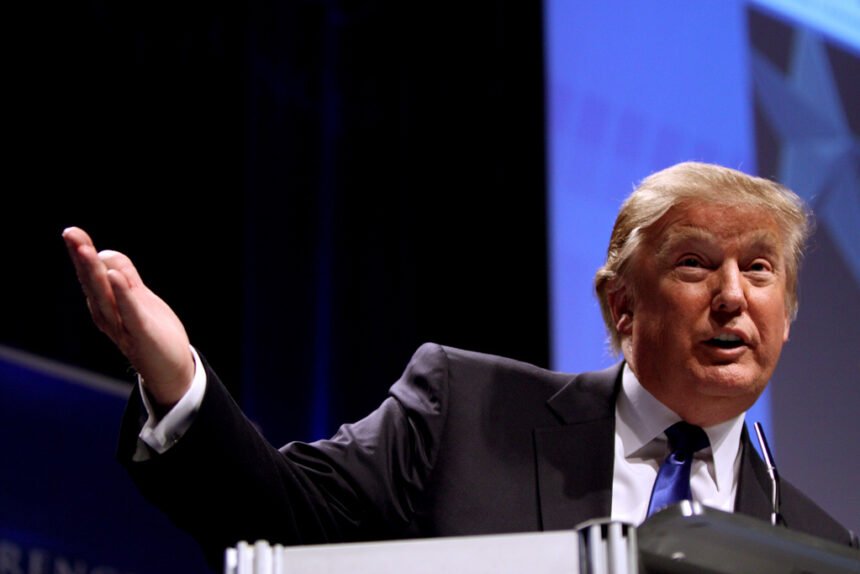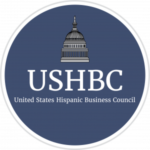CHICAGO — Former President Donald Trump will come to Chicago for a speaking event at the National Association of Black Journalists’ conference Wednesday.
Trump’s appearance has drawn mixed reviews from members of the journalist organization as well as from Chicagoans. But that’s no surprise given his rocky recent history with the city.
“I have great respect for the city of Chicago and its citizens,” Trump wrote in an op-ed to the Tribune in June 2014, when he was fighting criticism of the huge “TRUMP” sign on his Downtown tower.
But even before that statement, Trump had taken to criticizing Chicago and its leaders in tweets and statements — and he couldn’t resist making a barb at the city in that op-ed, either. Things have deteriorated since then.
Here’s what to know ahead of his appearance Wednesday.
Sign Controversy
The city’s first feud with Trump began well before his presidency: In spring 2014, he hung a large “TRUMP” sign on Trump Tower, 401 N. Wabash Ave., which quickly generated controversy.
The Tribune’s famed architectural critic, Blair Kamin, criticized the sign — as did numerous officials, including then-Mayor Rahm Emanuel, and everyday Chicagoans. Critics said the sign was large and didn’t fit the historical vibe of the area’s buildings.
Officials looked for ways to remove the sign or prevent similar signs in the future.
Trump defended his sign in an op-ed to the Tribune — but also took a notable swipe at Chicago in response.
“The worldwide publicity this criticism has caused has not only been good for the building but it has been great for bringing Chicago into the news – and for something other than the negative news of late,” Trump wrote. “Perhaps the Mayor will thank me someday!”
Years later, after Trump was elected, Chicagoans and visitors began taking photos in front of the tower — with their middle finger raised — to show their feelings about Trump.
After Trump supporters stormed the Capitol on Jan. 6, 2021, some officials again pushed for a way to remove the sign from the tower.
Failed Political Rally
When running for president in 2016, Trump attempted to hold a rally where he would speak at UIC Pavilion. Many people — including those who said they’d come from hundreds of miles away — lined up to attend.
But the event was controversial from the get-go, as Trump’s political rhetoric on the campaign trail had already made him a less-than-popular figure for many in Chicago, a liberal and Democrat stronghold. The event attracted large groups of anti-Trump protesters.
Trump never spoke or appeared at the rally: Fights and arguments broke out between his supporters and critics, and the event was quickly canceled. It was “total chaos,” as an observer noted at the time.
M. Scott Mahaskey, a journalist who had been following the Trump campaign at the time, said the Chicago event was “absolutely” the worst he’d seen at that point in terms of escalation.
Outside the event space, Chicagoans celebrated the cancellation — but fights between the pro- and anti-Trump crowds continued.
Several injuries and arrests were reported.
For years, Chicagoans bragged about how the city was the only one that had turned away Trump during the campaign.
‘Worse Than Afghanistan,’ Controversial Tweets
Trump has frequently used his Twitter feed — and, now, his Truth Social — as well as public statements to take aim at Chicago.
As early as 2013, Trump was tweeting criticisms of Chicago, saying, “Chicago is a shooting disasters-they should immediately go to STOP AND FRISK. They have no choice, hundreds of lives would be saved.”
Amid the Trump Tower sign fiasco of 2014, Trump shared numerous tweets praising his sign — but also shared criticism of the city, writing in a tweet, “The most stringent gun laws in the U.S. happen to be in Chicago – and look what is happening there!” Experts disagreed with him that Chicago had the strongest gun laws.
Also amid the furor, he wrote, “Obama should work on a ceasefire in Chicago as well as Gaza.”
While on the campaign trail and in office, Trump’s critical tweets and statements ramped up. In September 2016, shortly before he was elected, he told “Fox & Friends” that Chicago was “worse than some of the places we’re hearing about like Afghanistan.”
Trump again said Chicago’s violence was “totally out of control,” and, in separate tweet, that Chicago needed to “fix the horrible ‘carnage’ going on” or else he’d “send in the Feds!” early in 2017, when shootings and homicides had skyrocketed in the city.
In February 2017, Trump said Chicago was “worse than some of the places … in the Middle East where you have wars going on.”
Such comments led to criticism from locals and officials, who pointed out Chicago’s violence was nowhere near as bad as that seen in Afghanistan or other war zones and that many of the city’s illegal guns come from “Trump country.”
Also in 2017, the Trump administration attempted to pull federal funding from Sanctuary Cities, which would have included Chicago — leading to a legal battle in which the city’s officials vowed they wouldn’t “knuckle under” to his threats.
In a 2018 tweet, Trump said Chicago police had the right to protest the “mayor and administration that just won’t let them do their job.” The next year, he wrote on Twitter that, “Chicago will never stop its crime wave with the current Superintendent of Police.”
Shortly before Trump’s 2020 election loss, his attacks against Chicago increased.
“New York City and Chicago play the Sanctuary City card, where criminals are protected,” he wrote on Twitter in July 2020. “Perhaps they will have to start changing their ways (and thinking!).”
And in an August 2020 tweet, Trump said Chicago was a “total DISASTER” along with New York City and Portland.
In late October, shortly before that year’s Election Day, he wrote, “As a developer long ago, and continuing to this day, the politicians ran Chicago into the ground.”
‘Resist’ Banners, Little Hands Jokes And More
Chicagoans have pushed back on Trump in numerous ways over the years.
In 2017, a group of people clandestinely hung up a banner that said “Resist” on Trump Tower. The same year, more than 100 people said they’d drop trou and moon Trump Tower.
Famed hot dog stand Wiener’s Circle offered a 3-inch hot dog called a “Trump Footlong” in 2016, around the same time a local brewery released another batch of its Chinga Tu Pelo (“f— your hair”) anti-Trump beer. Wiener’s Circle also mocked Trump’s “tiny hands, tiny heart” on its sign in 2018 as it called for migrant children to be freed amid a crackdown on undocumented immigrants.
In 2017, when Trump, speaking at a rally in Iowa, asked, “What the hell is going on in Chicago?”, Chicagoans took to Twitter to reply with lots and lots of jokes: “I just went for a nice walk by the lake and [ate] some pulled pork tacos.” “I walked safely home and put my kids to bed after dinner.”
People also protested and rallied against Trump’s policies numerous times, and Chicagoans held fundraisers where they raised thousands to help immigrants and people in need negatively affected by Trump’s policies.
Election Results
Trump lost Chicago in wide margins in the 2016 and 2020 general elections.
In general, Trump has seen the most support on the Far Northwest and Far Southwest sides. Those tend to be more conservative strongholds with larger populations of city workers from the police and fire departments.
But in even those areas, Trump has still lost the wards overall.
And Chicago’s had very strong reactions to Trump’s election results. After he won the 2016 election and became president, Chicagoans held large protests for days Downtown. And the Women’s March on Chicago after Trump’s inauguration drew an estimated 250,000 people.
After Trump lost to President Joe Biden in 2020, Chicagoans took to the streets to celebrate with music and dancing, champagne and joy-filled rallies.
Trump notably feuded with Lori Lightfoot while she was mayor of Chicago and he has gotten into tiffs with Illinois Gov. JB Pritzker. These rivalries came to a head in 2020 during the COVID-19 pandemic as Lightfoot and Pritzker took markedly different approaches to handling the crisis than Trump.
Trump took a more laissez-faire approach to the pandemic, urging lax precautions and restrictions and pushing for businesses to reopen fairly early in the crisis.
Lightfoot and Pritzker, on the other hand, urged people to wear masks, closed non-essential businesses and enforced restrictions they hoped would slow the virus’s spread and prevent deaths.
“Why should the people and taxpayers of America be bailing out poorly run states (like Illinois, as example) and cities, in all cases Democrat run and managed, when most of the other states are not looking for bailout help?” Trump tweeted in April 2020.
Lightfoot and Pritzker dismissed Trump’s criticisms — and fired off barbs of their own at the then-president — numerous times amid the feuding.
Trump did an “abysmal job in managing” the crisis, Lightfoot said at a news conference.
“Obviously the president’s ability to judge how someone is performing and functioning is clearly off,” she said. “His meter is badly damaged because he thinks he has done a good job in this crisis, and nothing could be further from the truth.”
Lightfoot and Pritzker have also traded insults with Trump over how Chicago handles its crime and immigrant communities, among other topics. Notably, Lightfoot said Trump’s hateful rhetoric was at least partly responsible for politicians — including her — receiving threats.
The rivalries continue: On Tuesday, as Trump’s appearance at the conference approached, Pritzker criticized the former president again.
“Every time Donald Trump visits the Midwest he tells us how much he hates it. He called Milwaukee horrible. He called Detroit corrupt. He denigrated Chicago police …,” according to NBC5’s Mary Ann Ahern. “His visit to Chicago tomorrow will no doubt be another attempt to distract from his flailing campaign with as many lies as there are vacancies at Trump Tower.”
Listen to the Block Club Chicago podcast:









